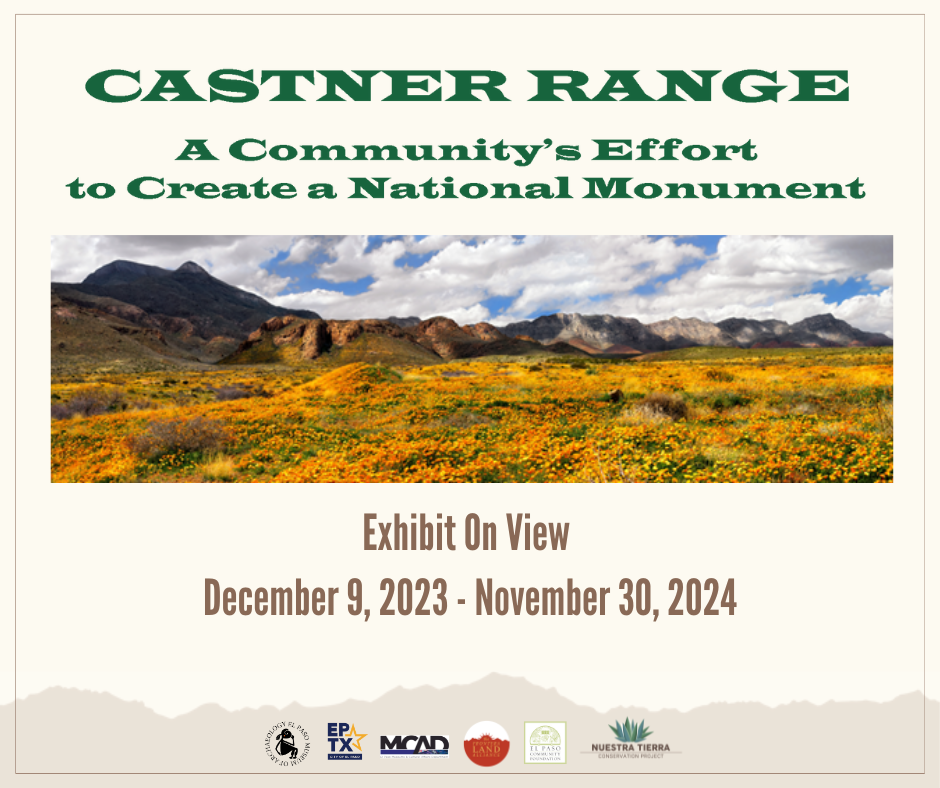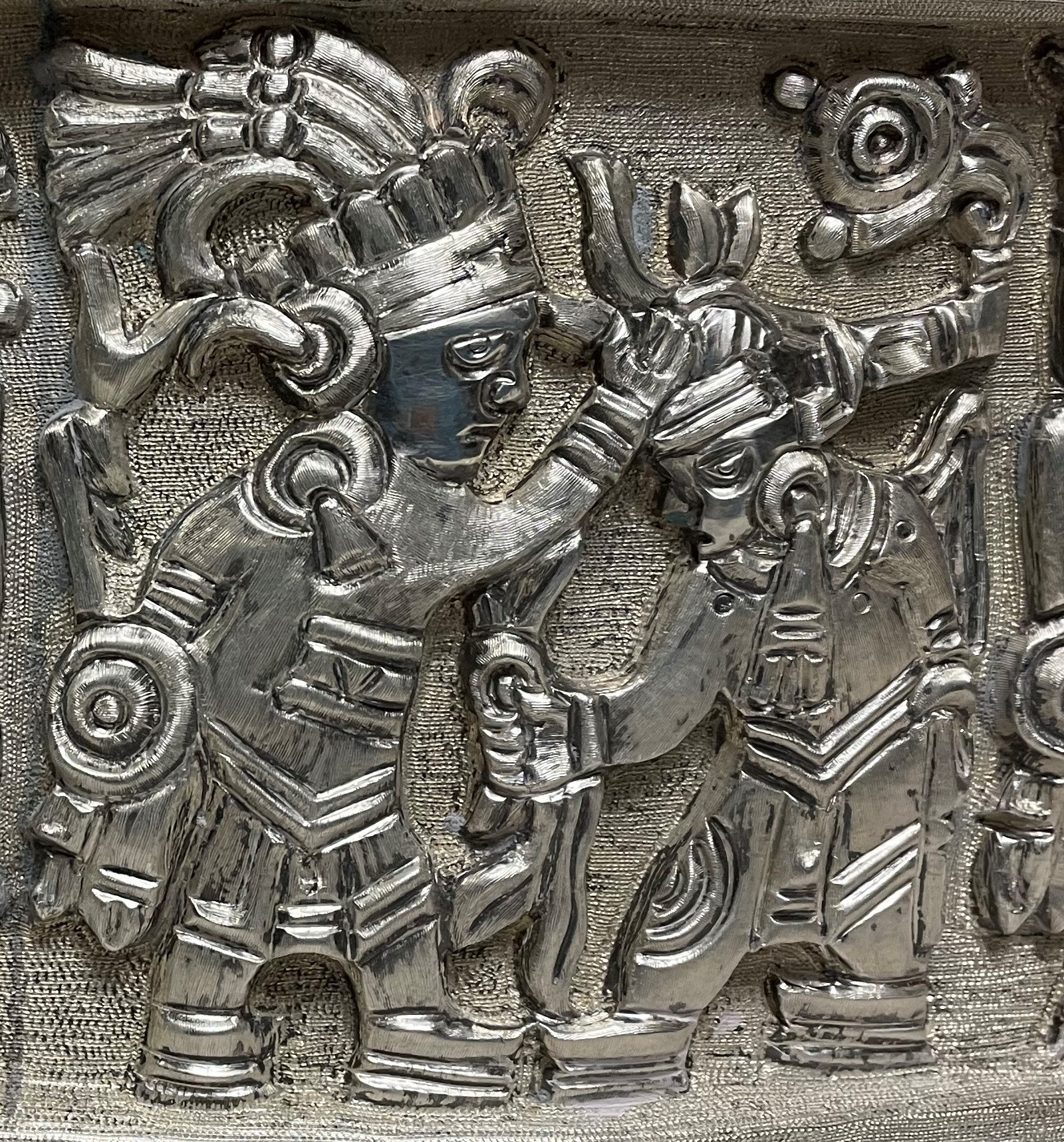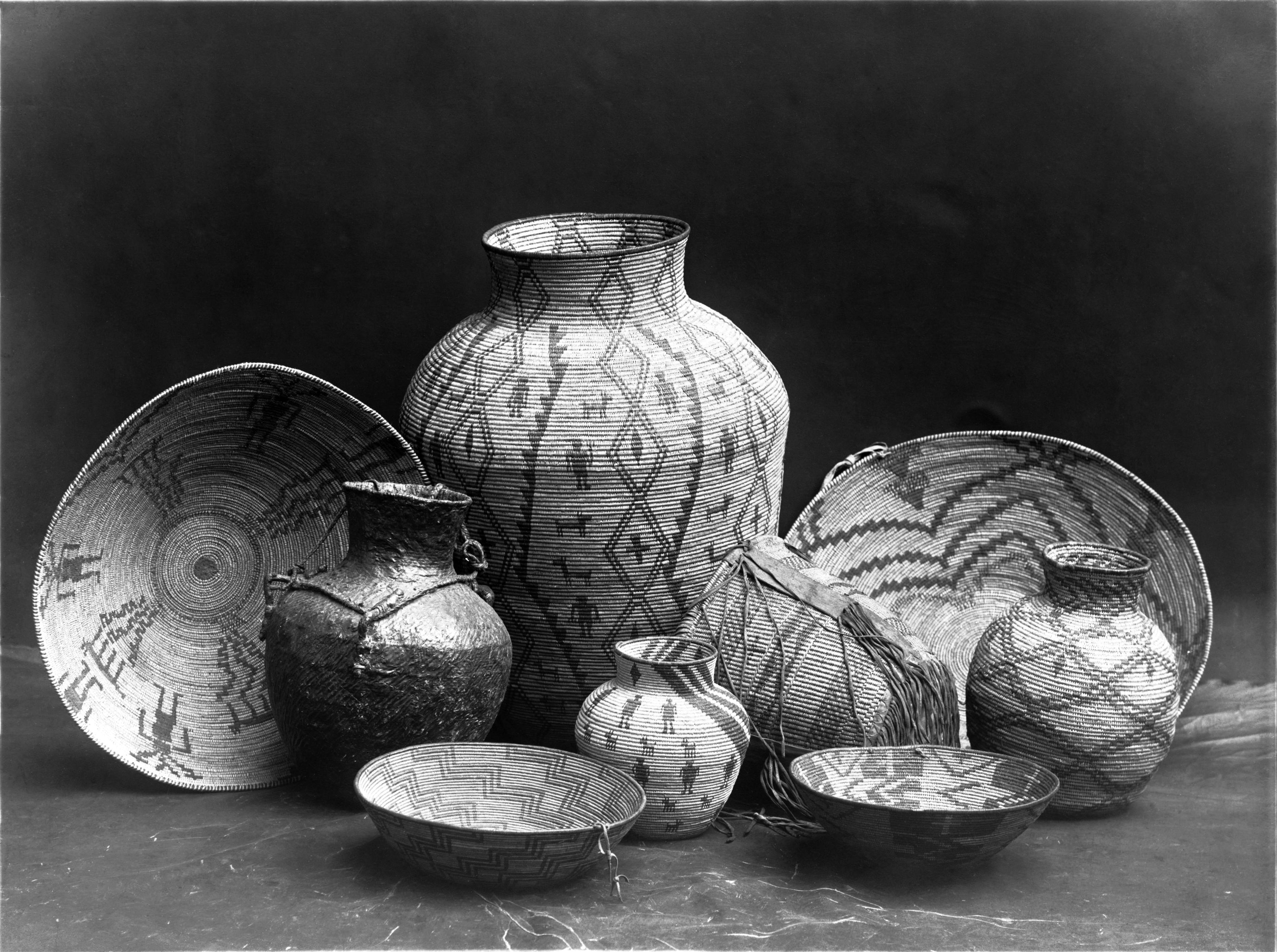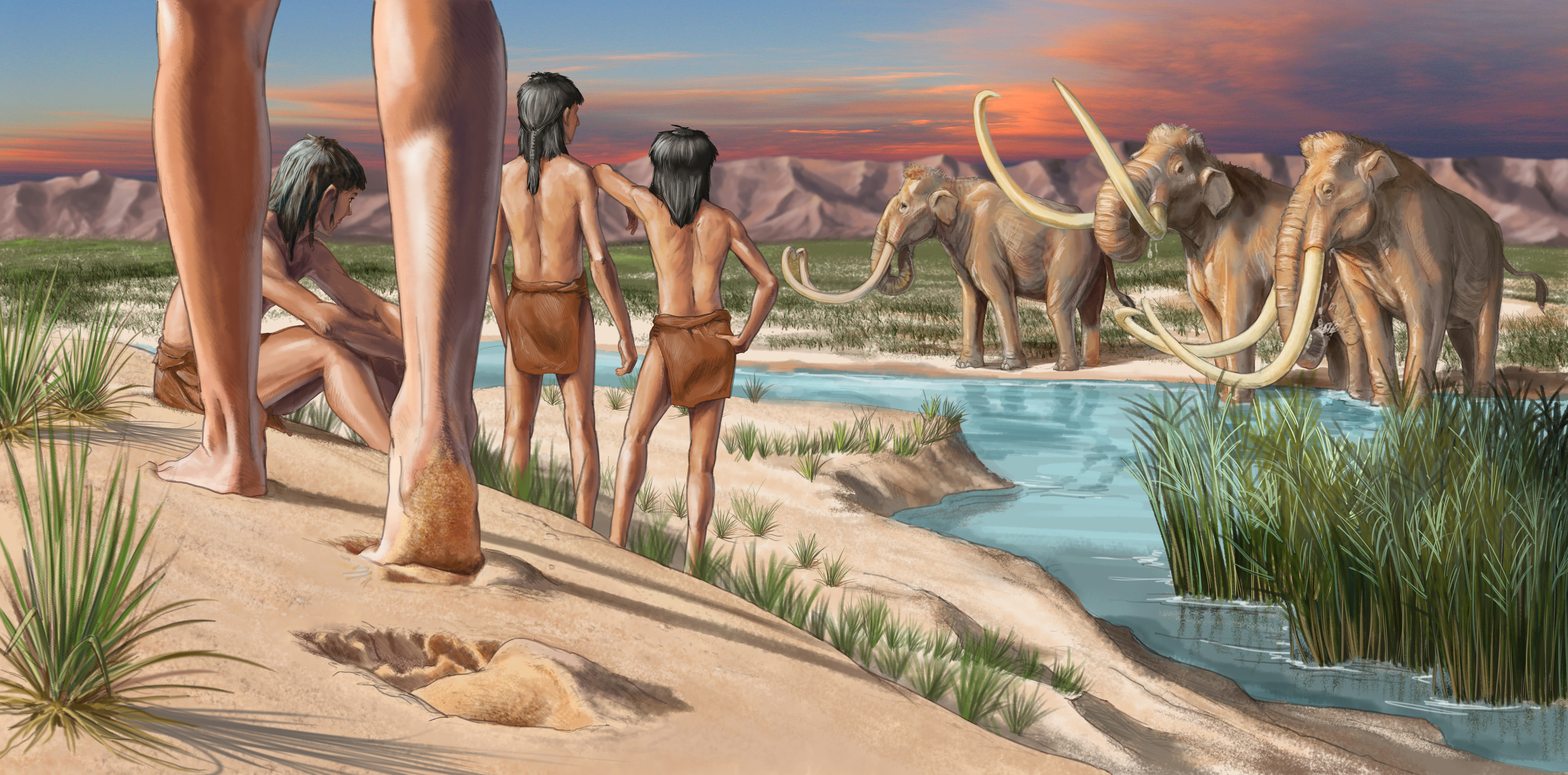
Castner Range, A Community's Effort to Create a National Monument
December 9, 2023 to November 30, 2024
This exhibit focuses on the biodiversity and archaeological conservation, history of the range and the preservation movement that led to the proclamation of the national monument.
Exhibit is brought to you by the El Paso Museum of Archaeology, Museum and Cultural Affairs Department and the City of El Paso, and with the support of the El Paso Community Foundation, Nuestra Tierra Conservation Project and The Frontera Land Alliance.

The Mesoamerican Inspired Artwork of the Vigueras Family, Mexican Silversmiths
January 27 to June 29, 2024
This is our newest Lobby Exhibit, showcasing several artworks in silver done by the Vigueras brothers of Mexico. Master silversmith Ignacio Vigueras pieces honor the Mesoamerican past of Mexico.
The exhibit showcases a history silversmithing in Mexico, since Mesoamerican times, including the colonial period and the renaissance of this art in the 1920's, linked to the Mexican government efforts to create a national plan to place in value the culture of the country right after the Mexican Revolution, to reinforce the idea of unification. This factor, and the rise of tourism in the country, created a rich cottage industry of silversmiths, that reached its apex in the 1950's and 1960's, with numerous exhibits organized by the Mexican government around the world, with the Vigueras brothers exhibiting the pieces displayed in this exhibit in Europe, Asia, and at the 1964-65 World Fair of New York.
The Vigueras family of silversmiths represent the struggle of the Mexican people, the fight to abandon the old colonial idea of a poor country, to modernize it, while keeping its cultural traditions. Their work allowed later generations of the family to succeed with college careers and other artistic endeavors.

Woven Treasures, Baskets from the Museum Collection
This semi-permanent exhibit showcases Native American basketry from the Southwest region as well as pieces from California, The Pacific Northwest, and the state of Chihuahua, Mexico.
Most of the baskets in exhibit date from the late 19th century to the first half of the 20th century and form part of our museum's permanent collection.
From being simply functional to having ceremonial or sacred purpose, we are pleased to honor the basket weavers that have been creating authentic pieces of art since at least 10,000 years ago worldwide.
Apache Baskets, Edward S. Curtis, 1907. Courtesy of American Indian film gallery, culture of Apache tribes and Hopi tribes, https://scalar.usc.edu/works/american-indian-film-archive/apache-arts-and-crafts

White Sands: Fossil Tracks/Huellas Fósiles
The human footprints recently discovered in White Sands are dated to be about 23,000 to 21,000 years old. This exhibit showcases detailed information about various sites and the interaction of ancient humans with their environment, especially with the last Ice Age megafauna. On display are two casts and molds of both human and animal prints, created by Fab Lab El Paso, and two real samples of the strata layers, with one of them showing the seeds used to date the foot prints, generously donated by White Sands National Park.
Featured as one of the top ten world archaeological discoveries in 2021 by Archaeology Magazine, it has proven to be crucial in the studies of early human occupation of the Americas, helping us understand that human arrival to the continent clearly happened before the 12,000 B.C. mark. The White Sands National Park discoveries change this, providing footing for more exciting finds in the future.
Image courtesy of White Sands National Park.

